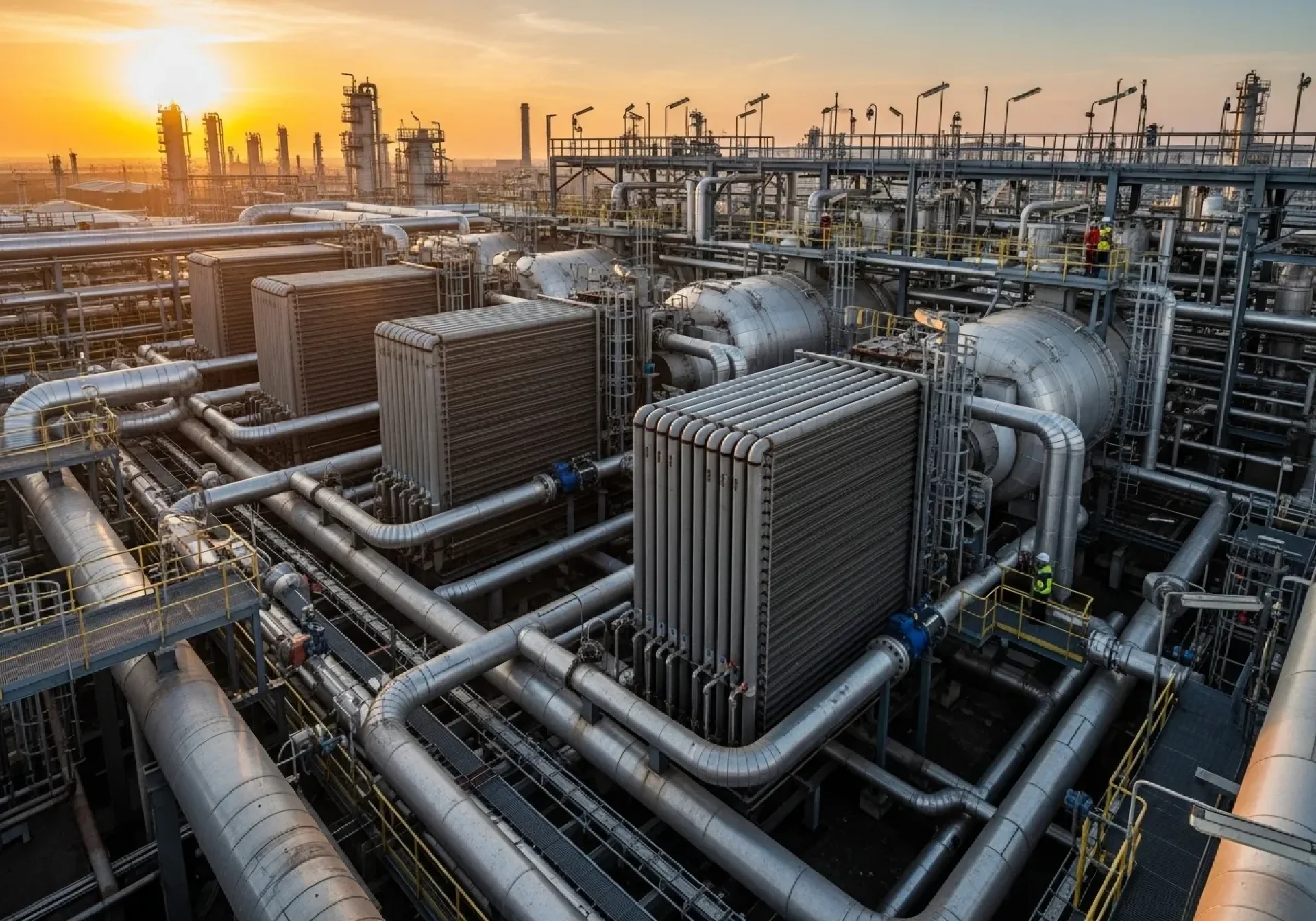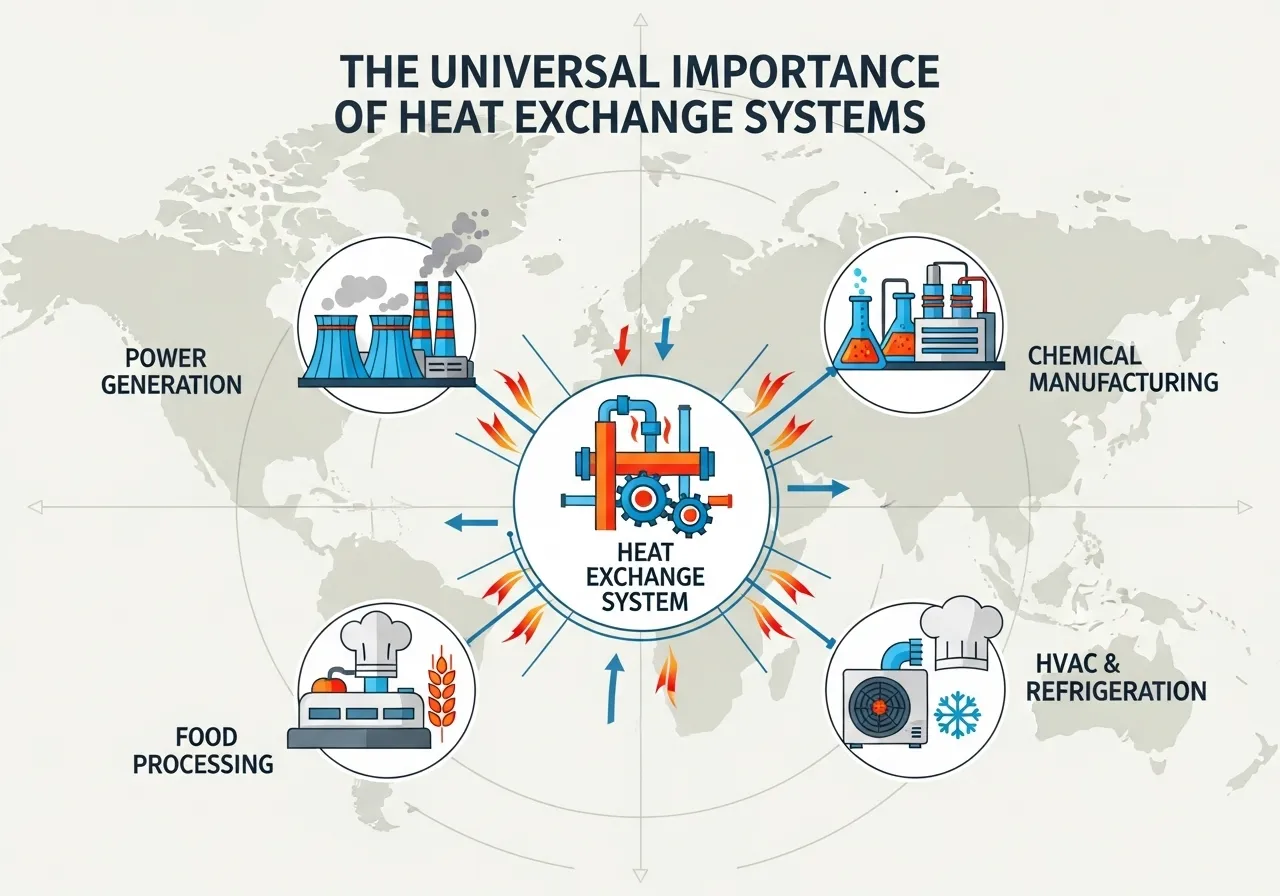What is a Heat Exchange System? Principles, Types, and Industrial Applications

In the industrial world, thermal energy is a widely used resource, from power generation, chemical plants, and food and beverage production to refrigeration systems. The ability to manage and use this energy efficiently is key. A heat exchange system has thus become a fundamental piece of equipment that helps transfer thermal energy from one fluid to another efficiently, without direct contact between the two.
Definition and Role of a Heat Exchange System
A heat exchange system is a set of equipment designed to transfer thermal energy from a hot fluid to a cold fluid, without the two fluids mixing. This type of operation makes the production process more efficient, reduces energy loss, and allows the overall system to be more cost-effective.
Basic Working Principle
The key principle of heat exchange is that "heat flows from hot to cold" through a medium like a metal plate or tube. This depends on the system's design, material selection, and the flow pattern of the fluidssuch as counter-flow, parallel-flow, or cross-flowto achieve the most efficient energy transfer.
Types of Heat Exchange Systems
In industry, various types of heat exchange systems are designed to suit different applications:
- Shell and Tube Heat Exchanger: The most common type, consisting of numerous tubes within a large shell; it is durable and can handle high pressure.
- Plate Heat Exchanger: Uses thin metal plates stacked together; highly efficient and requires less space, ideal for the food and pharmaceutical industries.
- Air Cooled Heat Exchanger: Uses air as the cooling medium, suitable for areas where water is scarce.
- Double Pipe Heat Exchanger: Has a simple structure with one pipe inside another, suitable for small-scale systems.
Applications in Various Industries
Heat exchange systems play a crucial role in many industries:
- Energy Industry: Used in power plants for cooling and steam generation.
- Chemical and Petrochemical Industry: Used to control temperatures in chemical production processes.
- Food and Beverage Industry: Used for pasteurization and product cooling.
- HVAC and Refrigeration Industry: Used to control the temperature of buildings and machinery.
- Automotive Industry: Used in car radiators and engine cooling systems.
Importance for Energy Saving and the Environment
The use of a heat exchange system not only helps save energy but also reduces greenhouse gas emissions and promotes efficient resource utilization.
- Reduces thermal energy loss from production processes.
- Decreases the use of water and natural resources in cooling processes.
- Supports environmental standards and sustainable development.
- Helps organizations reduce costs and build an eco-friendly image.
The System Behind Industrial Sustainability
When asked what a heat exchange system is, the answer is a device that enables the efficient reuse of energy, supports cost reduction, saves energy, and lessens environmental impact. Selecting the appropriate type and ensuring continuous maintenance make this system a cornerstone of sustainable industrial development.



